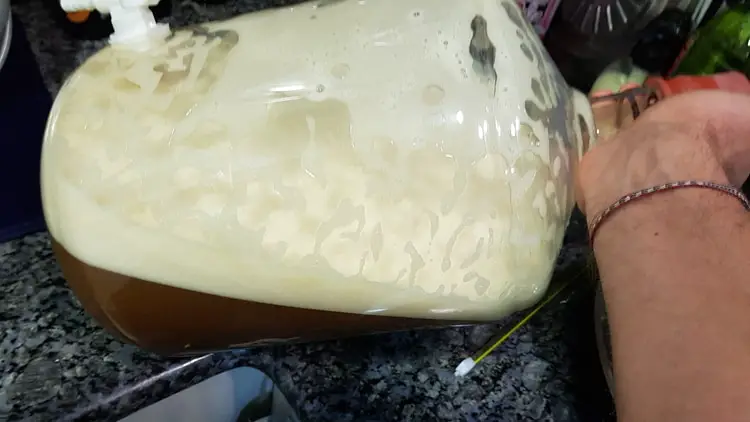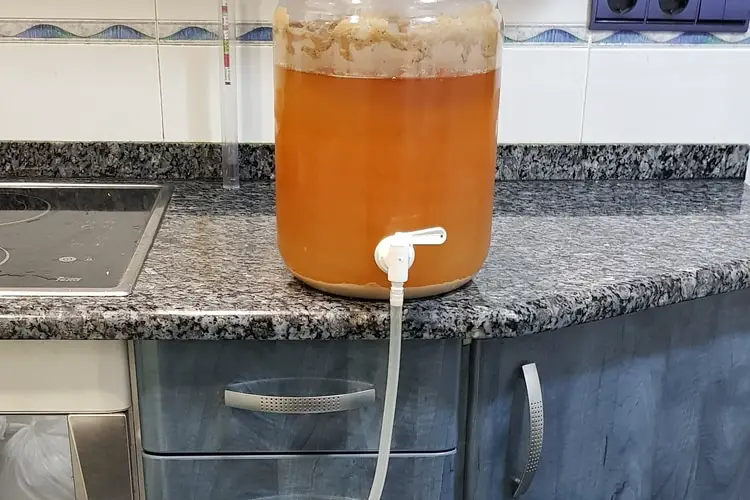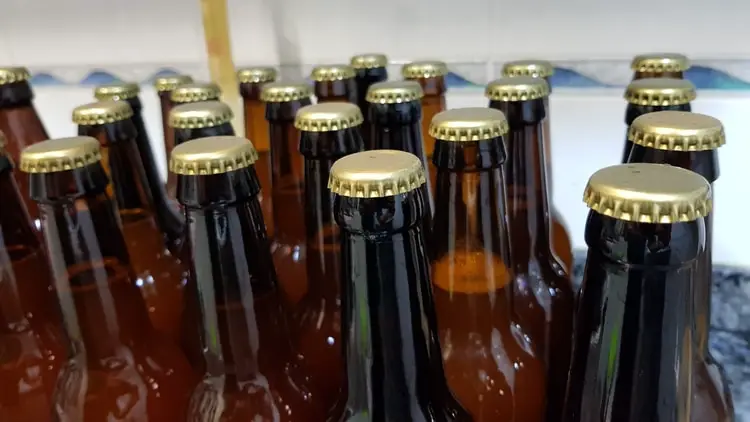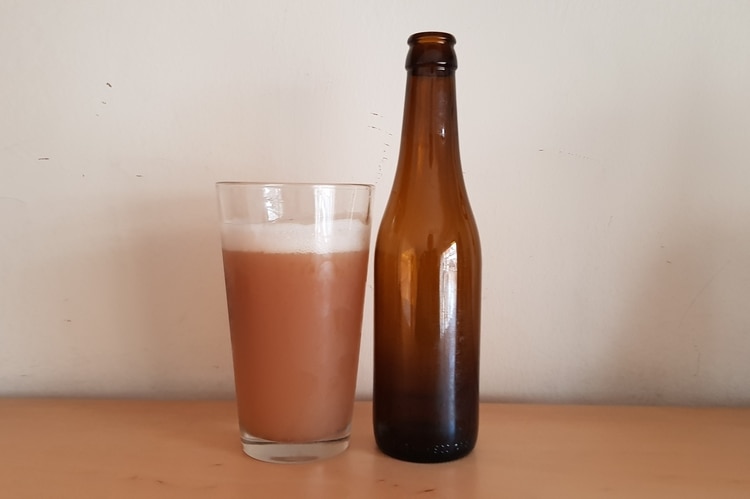Oxygen is indispensable in the metabolism of yeast, an absolute vital component. Then there is oxidation.
Once primary fermentation begins, O2 is a mortal enemy, sure to bring ruin upon the best laid plans. Oxidation occurs with improper handling and is avoidable.
Oxidation occurs when oxigen enters your beer during or after fermentation. It results in off flavors and the partial or complete breakdown of all redeeming flavor qualities. It can be avoided, yet not reversed. To sidestep oxidation requires a close adherence to process.
As with all things brewing, cleanliness is key. Yet ironically enough, O2 becomes a bitter enemy once sugar to alcohol conversion begins.
Let’s examine what happens, the likely time and place, and what the brewer may lose or gain.
What is Oxidation for Home Brewing?
Oxidation is when beer is introduced to O2 after during or after fermentation, primary or secondary. The end result is the flavor becomes flat, like a fridge’s pasteboard box cut open and turned into a slide in the upstairs hall for the kids.
Not only does the beer have no depth, but also closely resembles the aforementioned cardboard, spread out and used as a low friction play surface for your cousin’s sock laden feet.
Speaking of socks, that is another flavor profile of oxidized beer, mustiness.
This is not the bacteriological (bromhidrosis), stinkfoot, version of socks, but more like the socks that have sat in the bottom of your drawer for years, because they won’t stay up on your feet.
Getting O2 into your Raw Wort

O2 is mostly your friend, BEFORE fermentation has begun.
A vigorous medium-heavy rolling boil is ideal for beer kettles, whether a concentrated extract wort on the stovetop, or a full volume 13-gallon boil on a gas burner out in the yard.
The boil folds oxygen into the wort and attaches itself to the malt proteins, adding a vital nutrient for the yeast.
Professional brewers will add O2 via a ceramic or steel carbonation stone (like this one on Amazon), during transfer from the kettle to the fermenter.
It is not always necessary but there is almost no such thing as too much oxygen.
There are oxygen stones available for homebrewers.
There will be a small investment for the stone itself, a gas regulator and an O2 tank.
You could possibly lease the tank from the gas supplier for maybe $10 a month if it is important to you, and you have a set brewing season.
O2 During Fermentation
For the first 8- 12 hours of fermentation the beer itself sits in an aerobic (oxygen rich) state.
The yeast absorbs the O2 and multiplies, ready for its upcoming work.
Once yeast has respired and reached the critical cell count, it begins eating and metabolizing the sugar and off-gassing CO2.
At this stage, the beer becomes anaerobic (oxygen free) and remains this way for the duration of the process.
Moving the beer during fermentation is the easiest way to pick up O2.
Never move an ale that is in primary fermentation, which should last 3-7 days, depending on environment and yeast. Lagers will take longer.
Once primary is finished, your fermentation is at least 90% complete, the attenuation (percentage of fermentable sugars converted to alcohol) having reached at least 65 – 70%.
At this stage I stridently recommend racking your beer into a secondary glass fermenter.
Old hop solids, proteins, and dead yeast cells are left behind in the primary vessel.
The majority of remaining yeast is healthy, circulating and still-working yeast in suspension within the beer.
The Vulnerable Times for Oxidation
1. The Transfers
Transfer gently, making sure each end of your hose is sanitary and submersed in the beer.
Pay attention that the hoses are firmly connected and are not forming bubbles during the siphon.
Never splash nor create bubbles during this process.
It should be a calm and quiet exercise.
As discussed with the O2 tank above, one could purge the vessels with CO2 prior to transfer.
The beer will touch oxygen during transfer. As long as it is not absorbed in solution, it will be fine.

Yeast Protection During Fermentation
As discussed throughout my writing, I do recommend fermenting in glass or a vessel with a small headspace.
Introducing O2 is a risk at any given time.
The yeast, as biologically clever as it is, perceives the O2.
As it ferments it pushes the O2 from the beer and when primary is over will form a protective skin on top of the beer.
Aside from the continual, though slow, off-gassing of CO2, this protective layer keeps O2 out and secures the desired attributes of the metabolizing unfinished beer.
Recall the beer still undergoes a secondary fermentation for 8 -15 days. Although slow, it creates CO2 as it goes. Therefore, after racking, it is a matter of minutes before a blanket of CO2 has formed to protect your beer.
All said, a large head space or a plastic vessel will allow O2 to settle. One hopes it gets pushed out. The plan was to move the beer in ten days, but stuff happens. There is a risk.
2. During Packaging
This is the most vulnerable time for homebrewers.
The work surfaces, hands, and all equipment must be clean and sanitary.
The beer is usually racked again into a bottling bucket.
Making sure all connections are affixed tightly, gently siphon the beer over and stir in your corn sugar solution.
Just a moment of absent-mindedness and the beer is splashed or foamed too much.
Oxidation sets in.
However, a consistent process should be routine by the 3rd or 4th batch so it’s not much to worry about.
3. Air in the Bottles

When bottled or kegged at home, in most cases the beer is siphoned into the atmospheric bottle, meaning it’s simply filled with air.
Rack gently and there will be no issues.
Within just a few minutes or short hours, the yeast in suspension will begin making CO2 again, and all O2 is pushed to the cap.
They even have these nifty oxygen absorbing caps now, go figure!
Actually, they’ve had them for decades, just when I homebrewed, I didn’t want to spend the extra 3 cents for the cap. C’mon, you kidding me? I saved $1.42 per batch!
4. Moving Newly Packaged Beer
Many folks homebrew with friends.
Cool! Someone has the better kitchen, garage, man-cave or secret chamber where the torture never stops.
It is natural to package together and split up the booty when finished.
Scrubbing bottles is tedious.
DO NOT, throw the newly packaged beer into the trunk of the car and drive across town, over the mountain, cross-country or anywhere!
Splish-Splash, I was takin’ a bath, along about a Saturday night…in a bath full of astringent index-card flavored beer.
Yes, the beer has not had a chance to awaken and produce a protective layer of CO2.
When packaging beer and immediately jetting off to your own secret stash place, it’s as if each bottle were delicately and lovingly shaken.
Yes, it happened to me.
I’ve said many times I learned many things the hard way…and also when I made beer.
A buddy Bo and I were brewing in Asheville. I helped him build an all-grain setup. We used a few of my things and had a splendid Saturday afternoon of outside boiling. He had this perfect driveway parking area behind his house and down a small slope, surrounded by trees. It was flat and had a large open leisure space. All was well, although since I’m spilling here, the grain was a little old, I’d not had it sealed well, but whatever.
We were making an Altbier, one of the 3 German ales, the other two being Weizen and Kölsch. It had a strong munich character, about 15% of the total grist with 2-3% chocolate to give it some depth.
I came over 2 weeks later, we scrubbed a couple of fresh carboys and racked it.
Two weeks later, we packaged in those little German made 5-liter kegs. I’d recently bought about 30 of them as I was so tired of cleaning bottles.
Most Mistakes Happen When We Are in a Hurry
I loaded them into my trunk, eager to add them to my secret stash.
There is a certain satisfaction we get looking at stacked cases of beer, variously aged, but a true cellar of choices.
I even told my Bo, “I better go slow so it doesn’t splash too much.” That’s the maddening thing. I knew it would likely ruin it and did it anyway.
Don’t be that guy or gal.
If your gut says stop what you are doing, STOP!
There is likely a reason for it.
It doesn’t take long, 6 – 10 batches and anyone will start to develop brewing instincts.
If you are in an all-fire hurry to get your brewing chores done, then maybe wait until another day and wait until you are more relaxed.
5. During Storage
Old beer will oxidize during storage.
Not much can be done about it but here are just a few reasons.
- Not enough yeast to properly carbonate.
- O2 was inadvertently introduced during transfer or packaging
- The beer has O2 in solution but only a problem after months of storage
- O2 was inadvertently added during dry hopping.
Don’t panic, never panic, take a deep breath.
Oxidation ruins beer, but not always.
I’ll briefly go over each of the points above.
- Your yeast gave out and could not protect the beer in storage. That little bit in the head space will start to turn the bottle.
Most ales can be drunk within 2 – 3 weeks. Taste one in 2 weeks or 16 days. If it has some gas but you suspect oxidation creeping in, drink up. - If oxygen was introduced due to agitation, this is a bad situation. There will not be much time before it starts to produce off-flavors which are largely irreversible. If the beer is finished, you may be able to choke it down. It depends on the brewer’s taste and resolve.
- All beer, homebrew and most professional, has some O2 in solution. This is a fact of life, usually of no concern to homebrewers. Lager brewers or strong ale brewers run a larger risk as they age the beer for many weeks or even months.
For lagers, keep your process tight anyway. There is nowhere to hide missteps when brewing lager beer and they are terribly unforgiving of a poorly executed brew day.
Strong ales, Belgian, Imperial styles and Barley Wines can also be aged out for months. This mellows them, yet the O2 will leach out of solution and affect the flavor.
However, they can resist the flavor change and even be enhanced. - I never did much dry hopping. One time, yep, homebrewed for 5 years, professionally for 10, 1 time.
I can tell you that there is a small window of risk when dry hopping with leaf hops. The leaves themselves bring oxygen into the beer. However, most of these beer styles are 2 – 4 week beers, drunk quickly so few worries.
I recommend dry hopping at the end of primary, that way the beer is still active, and the CO2 will drive out any oxygen. The yeast can metabolize small amounts. If the beer is aged, or you want to dry hop in the keg, add hops with the priming sugar, it should be fine.
Drink up, enjoy with friends, the chances exist, but are low that this will be a problem
Flavor Profiles of Oxidized Beer
Oxidized beer flavor is hard to overcome.
I’ll give it to you straight.
- Lacquer or latex paint
- Cardboard, index card
- Musty/ astringent
- Artificial fruit flavored candy
- Sherry-like
The first four are not good. If they overtake your beer, it is irreversible.
As recounted above, my Altbier brew transported directly after packaging had the cardboard, astringent palate.
No matter how I tried, no redeeming value could be recovered.
The fruit candy flavor usually comes from a compound called acetaldehyde.
This yummy little by-product can not only make your ale indistinguishable from a spoiled packet of Duck sauce in the back of your kitchen condiment drawer, it will convert your ethanol back into ethanal, a terribly bitter and off-flavor.
Is it Ever Desirable?
As concerns strong ales, they often need to be put down for months to fully age and mature.
They are hot with alcohol, may have insanely intense hop profiles, or rich and chewy with astringent dark malts.
If the beer develops a little oxidation, combined with the other, powerfully infused flavors, the sweetness, a tart bite, a little grape-juice or candy finish is not all bad.
This is a best-case scenario.
It may be described as sherry-like.
Final Conditioning
All homebrew or small batch craft beer has O2 in solution.
It is just not something we worry about or can control to an exacting degree.
Keep the transfer hoses tight with no creases or cracks.
Never splash the beer during or post-fermentation.
It happens to everyone. If it happens to you, look closely at your process, think backwards through each step, and adjust next time.
If it happens after packaging, it may be gradual, and you perhaps can force down the beer with your buddies and none are the wiser. “Honey, we gotta get this beer drunk quick, let’s have a party!”
Keep recipe sheets. Record what goes right and take exhaustive notes on what goes wrong.
You may yet be a journeyman, and years away from mastery, and this is the exact right place for you today.
Enjoy the process, keep it clean.

